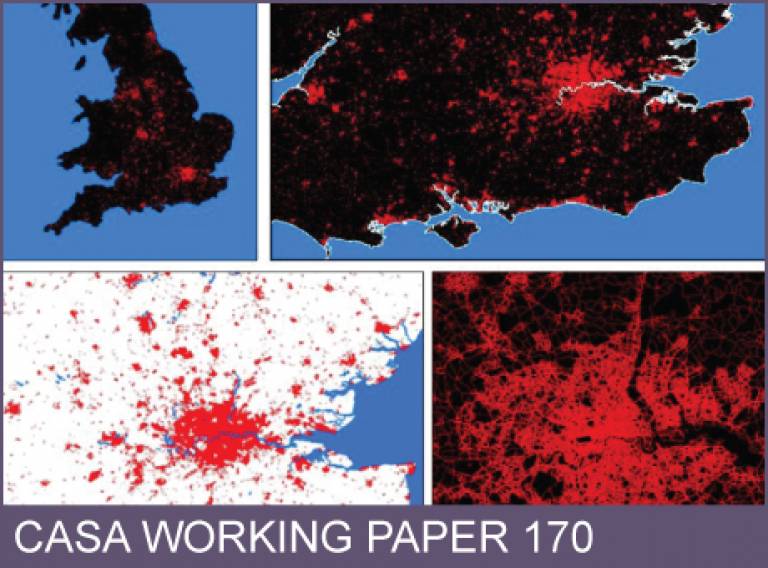CASA Working Paper 170

8 November 2011
Building a Science of Cities
Our understanding of cities is being transformed by new approaches from the complexity sciences (Batty, 2005). Here we review progress, sketching the background beginning with the systems approach which treated systems as being organised from the top down to that which now dominates where systems are treated as evolving from the bottom up.
The switch in thinking we describe is best pictured in the transition from thinking of 'cities as machines' to 'cities as organisms'. We first review developments in the dynamics of cities where the notion of equilibrium has been replaced by a veritable potpourri of different types such as chaos, catastrophes, and bifurcations. We then look at patterns and processes that give rise to morphologies that illustrate fractal patterns and self-similarity. We follow this with ideas about networks and interactions that sustain cities through their transport and then we show how such processes of movement and mobility can give rise to the diffusion and segregation of different spatial activities. In all these developments, ideas about scaling that relate size, shape and scale in space and time are evident and we thus sketch three scaling laws based on rank-size, allometry and gravitation that are central to our synthesis of how spatial processes give rise to physical morphologies. We conclude with notions about how these ideas are being embedded into models that have potential applications to inform policy.
Authors: Michael Batty
Publication Date: 11/2011
RPS ID:
Download working paper No. 170. File size 1.2MB, PDF format.
 Close
Close

